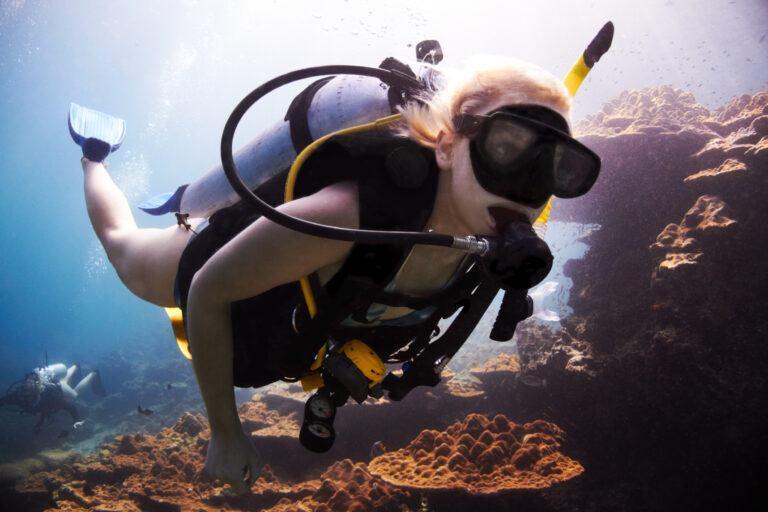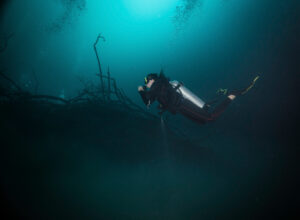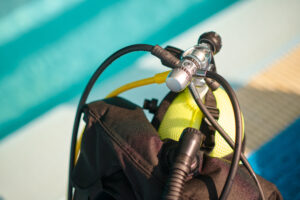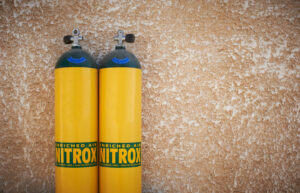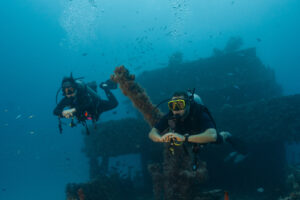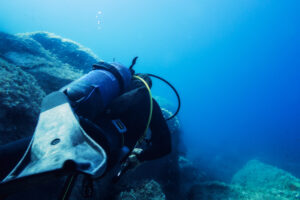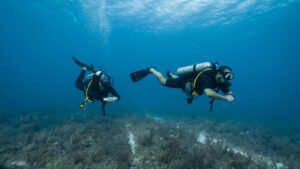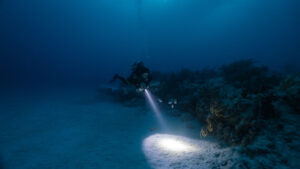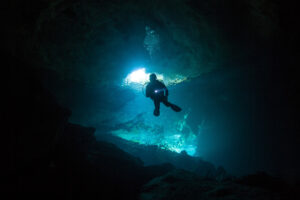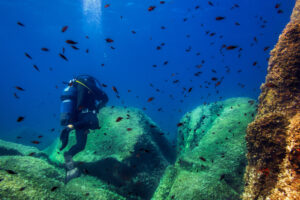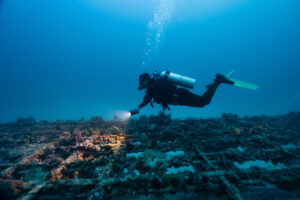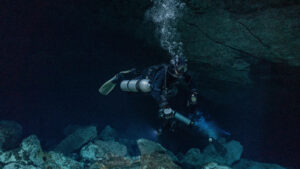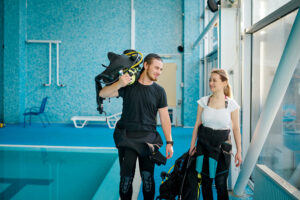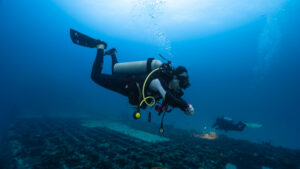What is Scientific Research in the context of Scuba Diving, Freediving, and Snorkeling?
Scientific research in aquatic environments encompasses a wide range of methodologies and disciplines, including marine biology, oceanography, and environmental science. Within this broad spectrum, scuba diving, freediving, and snorkeling serve as vital tools for researchers. These diving methods allow scientists to observe and gather data in underwater environments that are otherwise inaccessible. This entry delves into how each diving technique contributes to scientific discoveries and conservation efforts, highlighting their unique advantages and the specific methodologies employed.
Historical Development
The history of underwater scientific research is as fascinating as it is diverse, intertwining with the development of diving technology. Early attempts at underwater exploration were limited by the lack of suitable breathing apparatuses, but the invention of the aqua-lung by Jacques Cousteau and Emile Gagnan in 1943 revolutionized scuba diving and opened new vistas for scientific inquiry. This equipment allowed divers to stay underwater for prolonged periods, significantly expanding the scope of direct observation and data collection.
Before this invention, snorkeling—practiced in various forms for thousands of years—was one of the few ways humans could explore underwater worlds, albeit from the surface. Freediving also has ancient roots, with early civilizations engaging in breath-hold diving for food, pearls, and sponges. However, these methods were limited to shallow waters and short observational periods. The advent of scuba diving technology allowed researchers to conduct more comprehensive studies at greater depths.
Significant milestones in underwater research facilitated by diving include the work of Sylvia Earle and her teams in the 1970s, which used scuba gear to conduct detailed studies of marine ecosystems. Similarly, the use of freediving by researchers studying marine mammals and fish behavior has provided insights into the natural dynamics of these creatures without the disturbance caused by scuba equipment.
Research Methodologies
Research in underwater environments uses a variety of methodologies depending on the goals of the study, the habitat being examined, and the depth at which the research is conducted. Scuba diving allows for the installation of equipment, collection of specimens, and detailed observational studies. It is particularly beneficial for work that requires precision and time, such as archaeological underwater digs or coral reef monitoring.
Freediving, characterized by its minimal equipment use, offers a less intrusive method for studying sensitive environments or skittish wildlife. It allows researchers to quickly enter and exit research sites without the noise and bubbles of scuba gear, which can disturb aquatic life. Meanwhile, snorkeling provides easy access to shallow reef areas and is often used for surface observations and water sampling in these environments.
Each method comes with its own set of challenges. Scuba diving, for example, involves dealing with decompression limits and the need
for extensive training to handle complex equipment and emergency situations. In contrast, freediving requires exceptional breath-hold capabilities and has inherent risks due to the potential for shallow water blackouts. Snorkeling, while less technically demanding, limits researchers to surface observations and shallow dives, which can restrict the types of data that can be collected.
Scuba Diving in Scientific Research
Scuba diving has become a cornerstone in underwater scientific research, offering a blend of depth, duration, and direct interaction capabilities that are unmatched by surface-based methods. The ability to carry various instruments, from cameras and water quality meters to complex sampling devices, allows scuba divers to collect diverse types of data. For instance, marine biologists often use scuba diving to perform detailed surveys of coral reef health, counting fish populations, measuring coral sizes, and noting the presence of disease or bleaching events.
Environmental scientists also use scuba diving to monitor pollution levels by collecting water and sediment samples at different depths. These samples provide insights into the distribution of pollutants such as plastics, heavy metals, and other contaminants within marine ecosystems. Moreover, scuba diving facilitates the placement and maintenance of underwater sensors that continuously record data, crucial for long-term environmental monitoring projects.
One notable example of scuba diving’s impact on scientific research is the study of underwater volcanic activity. Researchers use scuba equipment to approach the vents of underwater volcanoes, allowing them to take temperature readings, video footage, and rock samples in environments that are hostile and difficult to reach. This research has been vital in understanding geological processes and has implications for predicting volcanic eruptions.
Additionally, archaeological underwater research has benefited immensely from scuba technology. Ancient shipwrecks and submerged settlements can be excavated with precision, allowing archaeologists to uncover artifacts in situ and better understand the context of these finds. Such studies have illuminated aspects of human history that were previously inaccessible.
Freediving and Snorkeling in Scientific Research
While scuba diving offers depth and duration, freediving and snorkeling provide distinct advantages in terms of accessibility and minimal environmental impact. Freediving, in particular, allows scientists to study marine animals in their natural habitats without the disturbance caused by scuba gear. Researchers have used freediving to approach species like sharks and dolphins more closely, observing their behaviors in ways that would not be possible with noisier scuba equipment.
Snorkeling is particularly effective for conducting visual surveys in shallow waters, such as seagrass beds, where boat or diving-based approaches might cause damage. It allows for rapid assessment of large areas, making it ideal for preliminary surveys and for monitoring changes over time in accessible locations. Snorkeling also plays a crucial role in community science initiatives, where trained volunteers gather data on local marine environments, contributing to larger databases used by scientists worldwide.
Each diving method opens unique windows into the underwater world, offering different perspectives and tools for scientific inquiry. The choice of method often depends on the specific requirements of the research project, including the depth at which the study is conducted, the type of data needed, and the intended interactions with marine life or environments. As technologies evolve and our understanding of marine ecosystems deepens, the integration of these diving techniques continues to be crucial for advancing scientific knowledge and supporting global conservation efforts.
Impact of Research on Conservation Efforts
The application of scuba diving, freediving, and snorkeling in scientific research has significantly impacted conservation efforts globally. Marine research facilitated by these diving methods provides crucial data that inform policies and management strategies aimed at preserving aquatic ecosystems. For instance, studies on coral reefs’ health have led to the establishment of marine protected areas (MPAs) where fishing and other potentially harmful activities are regulated or prohibited.
Scuba divers play a critical role in ongoing efforts to combat coral bleaching and disease. By monitoring reef conditions and collecting data over time, scientists can identify stress factors and intervene appropriately. For example, scuba research has helped pinpoint the effects of rising sea temperatures on coral bleaching events, leading to international calls for climate action to preserve these vital ecosystems.
Furthermore, research on the migratory patterns of endangered species, such as sea turtles and marine mammals, has been facilitated by both freediving and scuba diving. Freedivers, due to their ability to interact closely with marine life without the disturbance of bubbles and noise, often gather high-quality visual data and behavioral observations. This information is critical for creating effective wildlife corridors in oceans, ensuring that marine animals have safe routes for migration that are protected from fishing and commercial traffic.
In addition to targeted research, diving-based activities also engage the broader public in conservation efforts through citizen science programs. These initiatives train amateur divers and snorkelers to collect data on biodiversity, water quality, and other environmental indicators. By involving the community, these programs raise awareness about marine conservation issues and generate large datasets that would be otherwise unattainable due to the limited number of professional researchers.
Future Directions
The future of underwater scientific research looks promising, with advances in technology and methodology expected to enhance the capabilities of scuba diving, freediving, and snorkeling. Innovations in diving equipment, such as rebreathers, which recycle the diver’s breath and allow for longer and quieter dives, are opening new possibilities for extended research sessions at greater depths. Similarly, improvements in underwater photography and video technology provide clearer, more detailed images from underwater studies, crucial for documentation and analysis.
The integration of wearable technology and biometrics in freediving gear is also enhancing safety and efficiency. These tools monitor divers’ physiological responses in real-time, providing valuable data that can prevent accidents and improve dive planning based on individual capabilities and health conditions.
Another exciting development is the use of artificial intelligence (AI) and machine learning in processing the vast amounts of data collected through diving research. AI algorithms can analyze video and photographic data to identify species, count populations, and detect changes in marine environments more quickly and accurately than human observers. This capability is crucial for timely responses to environmental crises, such as sudden bleaching events or pollution spills.
Citizen science is expected to play an increasingly important role in the future of underwater research. As diving and snorkeling equipment become more accessible and user-friendly, more individuals can participate in data collection efforts. This democratization of science not only aids researchers in gathering more extensive data but also fosters a deeper public connection to marine conservation issues.
Moreover, virtual reality (VR) and augmented reality (AR) technologies are beginning to be used to bring the underwater world to a broader audience. By creating immersive experiences that simulate diving explorations, these technologies can educate people about marine environments and conservation challenges without requiring them to get wet. Such tools are not only valuable for public outreach but also for training and planning scientific dives in a controlled, risk-free environment.
Challenges and Opportunities
Despite these advancements, underwater research faces several challenges. The physical demands and risks associated with diving, particularly in extreme conditions, limit the scope and frequency of research expeditions. Moreover, the cost of specialized equipment and the training required for safe diving operations can be prohibitive for some research institutions, especially those in developing countries with rich marine biodiversity but limited funding.
Environmental concerns also pose a significant challenge. The presence of divers can disturb sensitive marine habitats, and the cumulative impact of frequent dives on popular sites can lead to degradation. Researchers must balance the need for data with the imperative to preserve these environments, necessitating careful planning and regulation of diving activities.
The opportunities, however, far outweigh these challenges. With the continued refinement of diving technologies and methodologies, and increasing global awareness of marine conservation needs, the future for scientific research in diving looks bright. These advancements promise not only deeper insights into underwater worlds but also more effective conservation strategies to protect them for future generations.
Key Takeaways
Underwater scientific research utilizing scuba diving, freediving, and snorkeling has profoundly expanded our understanding of marine ecosystems. These methodologies offer unique insights into the underwater world, facilitating significant scientific discoveries and informing effective conservation strategies. As technology advances, these diving practices continue to evolve, enhancing the depth, safety, and scope of aquatic research. Embracing these developments, alongside increased public involvement through citizen science, promises to further illuminate the mysteries of our oceans and drive effective conservation efforts to preserve these vital resources for future generations.

